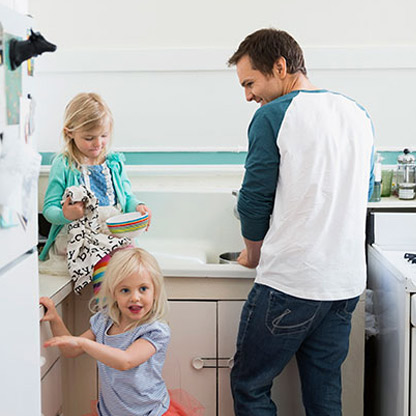So you’ve bought or rented a new home – congratulations! Between booking removalists and packing boxes, there’s a lot to do. We’ve put together this handy checklist to help make sure you’ve got the important things covered in the lead-up to moving day.
1. Start consolidating and clearing out. Consider whether you need to organise a skip, sell any excess things or arrange a council collection to get rid of unwanted items.
2. Carry out a rough inventory of the furniture in each room and estimate how many boxes or crates you’ll need.
3. Get quotes from several removal companies. Personal recommendations from friends and family may help you find a reputable company. Select your company, book your moving date and get your boxes or packing crates delivered, along with packing materials.
4. If you’ve bought your property, you may need to organise building insurance. Your mortgage provider may require you to have your new home insured. When purchasing home insurance you may need detailed information on the property, such as the age of your new home, what materials it is made of, and what it would cost at current market value to replace or rebuild.
5. Whether you’ve bought or rented, consider arranging contents insurance. Some providers may cover your belongings in transit to your new home. And if you already have home insurance, be sure to let your insurer know your change of address.
6. If your home is going to be empty for a time before you move in, make sure you tell your insurance provider. Actions you can take with the new place before your move can include:
- Ensuring the mail is picked up regularly
- Mowing the lawn when needed
- Making sure the windows and doors are securely closed and locked
- Fitting motion-activated exterior lights for dark areas around your home at night
- Having a timer to activate lights or a radio inside the home – you don’t want it to be obvious that your home is vacant
- Drop in and visit the home as much as possible
7. If you have car insurance, contact your insurance provider with your change of address. This is to make sure your vehicle is covered at your new address from the day you move in. Insurance companies often factor the location of where you park at night into the premiums they charge, so yours may change depending on your new location and where you keep your car.
8. Arrange to have your mail and any postal subscriptions redirected to your new address. It’s easy to do online with Australia Post.
9. Update your address with your:
- Friends and family
- Bank and other financial institutions
- Insurance companies
- Gas and/or electricity company
- Telephone company (including mobile phone and internet provider)
- Accountant and solicitor
- Superannuation provider
- Doctor and dentist
- State and federal electoral commissions
- Australian Tax Office (ATO)
- Provider for any investment holdings including shares or property
- Children’s schools or daycare centres
- Employer
- Driving licence and vehicle registration authority in your state or territory
- Subscription TV provider
- Magazine or newspaper subscription providers
- Reward or loyalty programs
- Any online stores you use regularly
10. Arrange final readings of meters and transfer electricity, gas, internet and landline accounts.
11. Consider changing the locks at your new home, and make sure the fire alarms are working properly before you move in or purchase new ones. Refer to the Fire and Rescue website for your state.
12. To assist with unpacking in your new home, label all boxes clearly with the room they belong in and their contents. Prepare an essentials carton with remote controls, allen keys, screws, furniture assembly instructions and so on. Lastly, load up a ‘survival kit’ with kettle, tea and coffee, some kitchen items like mugs, plates and cutlery, mobile phone chargers, breakfast food, bathroom necessities, medication, snacks, scissors, tools and toilet paper.
13. Moving day! Check off your belongings as they go into the removal truck and be on hand at the other end to check items off on arrival. And most importantly, enjoy settling into your new home!




